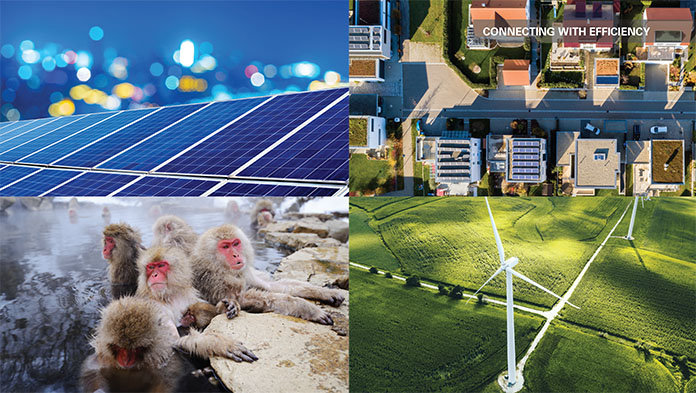Onsite energy generation and weather

A friend of mine and I were chatting about on-site energy generation and what to do when the seasons change. Specifically, solar pool heating.
“I turn my system off in the winter,” he said. As we are in California and our climate is very mild, I was surprised.
“Why? What kind of system do you have?”
“It doesn’t matter, he replied. “Solar only works in the summer.”
Although his assumption was incorrect, he did get me thinking about the connection between the efficacy of onsite generation systems and weather.
Are some onsite generations only effective in certain climates and temperatures? Is there ever a temperature or time of year that requires you to turn that system off? The answer depends on the type of system that you have.
In the spirit of our ever-changing weather, let’s look at a few systems and when they are optimal to produce energy, and if or when to shut them down.
Solar hot water systems
These systems are typically designed for the climate zone they are in. If you are in a freezing climate, these systems are typically designed and built with a non-toxic antifreeze mixture (not water) circulating in the collector, which heats the water in the tank. That means you can run it effectively in colder states. Granted, if your panels are coated with snow, you may not see a benefit, but if your system is designed for your climate, it should not need to be turned off in the winter.
Solar photovoltaic (aka, solar PV)
Photovoltaic systems require light to make energy and can operate all year long. While solar PV systems need light, they become less efficient in warmer temperatures. The colder the climate, the more energy the PV system creates. So solar PV systems certainly don’t need to be turned off in colder climates. They work better.
Geothermal energy
Geothermal uses heat from the upper 10 feet of the earth that maintains temperatures between 50 and 60 degrees Fahrenheit all year long. Geothermal systems use this resource to heat and cool buildings, and there is no need to turn off these systems for any season.
Wind energy
Of all renewables, wind is the most contingent upon weather and can be impeded by temperature. Rain creates a drag on the propellers and hot temperatures cause low air density, both of which cause lower production. Also, extremely cold temperatures can cause parts to freeze, requiring the system to be shut down to avoid damage. That said, some turbines are designed to operate at temperatures as low as -22 degrees Fahrenheit.
I think that covers it. Now let’s go for a dip in that solar-heated pool.
Author Mary Nitschke is the first president of the Utility Management Advisory Board, holds an Energy Resource Management Certificate from UC Davis, two BAs from UC Berkeley and is Director of Ancillary Services for Prometheus Real Estate Group, Inc. California.
Historical perspective
- March 2024
- February 2023
- July 2022
- March 2022
- June 2021
- February 2021
- August 2020
- February 2020
- July 2019
- April 2019
- June 2018
- April 2018
- October 2017
- May 2017
- November 2016
- June 2016
- November 2015
- June 2015
- September 2014
- June 2014
- April 2014
- December 2013
- July 2013
- December 2012
- July 2012
- October 2011


